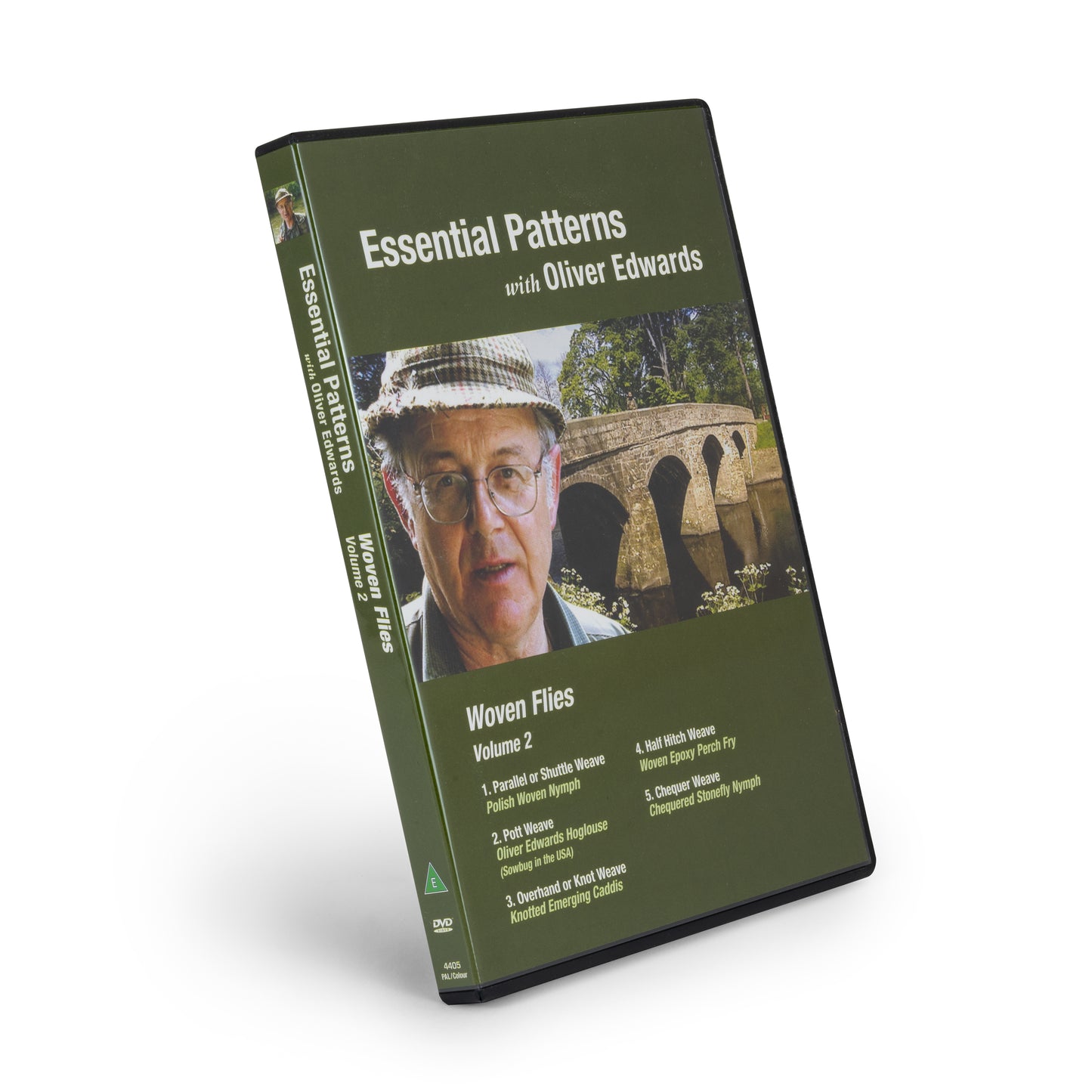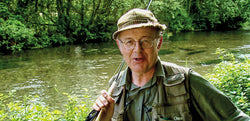Essential Patterns
Essential Patterns Volume 2 – Woven Flies - Run Time 3 hours 15 mins
Essential Patterns Volume 2 – Woven Flies - Run Time 3 hours 15 mins
Couldn't load pickup availability
Constructing the bodies of artificial fishing flies has historically always been a question of wrapping various materials around the hook shank. However, there is much more a fly tyer can do with body materials than merely wrapping them around the hook shank. Probably the most dramatic alternative to the traditional method is 'Weaving'. I don't understand why it's not more common, it's often a deceptively simple tying method.
This DVD is all about tying flies with woven bodies. They look fantastic, and they are great fish catchers. If you don't believe me, take a look at the images of the patterns I tie in this DVD.
Although these techniques are all commonly known as weaving, to be strictly accurate, only one of the eight or nine recognised weaves is in fact a weave in the true sense i.e. having warp and weft threads. All the rest are a variety of thread traps, bights, return locks and knots. All use thread like materials, or materials that come in long strands - yarns, threads, cords, chenilles, dubbing noodles, herls or plastics - but the list goes on and on, you are only limited by your imagination! All but the true weave use just two materials. The true weave on the other hand can be performed with at least ten strands - nine warps and one weft - all on the same fly!

The question fly tyers sometimes ask is who 'invented' the various weaves and when? Well I'm afraid I am unable to shed much light on this question. In fact only two weaves appear to be attributed to a particular fly tyer, and one name, Franz Pott appears to hold pole position as the originator of woven bodied flies. Franz Pott was a wig maker who came from Missoula Montana USA, and the period we are looking at is the 1920s and 1930s. He used his wig making skills to fashion the bodies and hackles of flies from hair, usually horse hair. He developed quite a range of woven patterns which were marketed under the title 'Mite' and 'Mighty Mite'. Dan Bailey is the other weaving 'name', his contribution is the Mossback Weave. However, when you analyse this weave, it is just the Parallel Weave, executed in a slightly different manner.
In my opinion there are five important weaves and these are all included in this DVD.
1 - The Parallel Weave (also known as the Shuttle Weave)
2 - The Overhand Weave (also known as the Overhand Knot Weave, or the Split Knot Weave)
3 - The Half Hitch Weave
4 - The Pott Weave, which in this DVD, I double up and show as the Double Pott Weave
5 - The Chequer Weave, which when only one warp thread is used, becomes the Single Spot Weave
Not only will you see each weave demonstrated in the usual Essential Skills clear and detailed manner, you will also see each weave incorporated into a very effective fish catching fly.

The status of weaving in fly patterns today is unclear, as fads, whims and fashions come and go even in fly tying! A few years ago weaving suddenly became popular, probably as a result of the Polish and Czech conquests in the World Championships. However, it was almost always the overhand knot weave which one saw, a very easy weave and not the weave that the Poles and Czechs use on their nymphs - that's the Parallel Weave, a much more difficult weave to achieve neatly!

Of the rest of the weaves, little is seen these days commercially, except for the Parallel Weave, whose stronghold today and for many years past is without doubt Poland. Their fly tying maestros produce the Parallel Weave to absolute perfection. Their woven nymphs are a joy to behold and are quite exceptional fish catchers, when used with the correct technique, as we have all seen in more than one World Championship!
Patterning, segmentation and above all the very important countershading are all features of the weaves. So, for nymphs, larvae and pupae of aquatic insects and small bait fish, the various weaves you will see on this DVD have a lot to offer.

I'm sure you'll have great fun learning these weaves and I'm equally sure that you'll master them in no time at all. As you will see, DVD is by far the best way to learn these techniques, as often the thread control and manipulation needed to weave neatly, is difficult to show clearly in print.

Remember though, the patterns I demonstrate are not 'Tablets of Stone'. Experiment with the techniques and particularly with the materials, I'm sure that pretty soon you'll be creating your own patterns from the weaving skills learnt from this DVD.
DVD Regions
DVD Regions
DVDs are produced in both PAL (European) and NTSC (US) television formats and all DVD regions are supported. We will dispatch your DVDs in the format and region code that corresponds to your shipping address.
Shipping
Shipping
Packages are sent Royal Mail 1st class within the UK or by Airmail if being shipped outside the UK. Packages over £60 are sent either signed, or tracked / signed for delivery.
As a guide, post and packing for a single DVD to a destination on the UK mainland or Northern Ireland costs £1.99, a full set of 8 DVDs will be sent signed for delivery in the UK, the post and packing is £4.99.
International post and packing ranges from £3.99 up to £16.99 for the international tracked and signed for service for orders over £60.
Delivery times vary depending on where the goods are being sent, we cannot guarantee delivery time; rough guide for the UK is 1 to 3 days from dispatch. International orders 5 to 12 business days from order depending on location.
Postage is calculated by weight and destination at checkout.
Learn-to-flyfish endeavour to ship orders by the following working day (working day Monday to Friday). Please note - exceptionally busy times, e.g. Christmas, Bank Holidays, first day after the weekend, there could be a delay with dispatch depending on the volume of orders.
You will receive an email confirming when your order is physically dispatched. (Make sure when ordering your email is correct.) If no Email has been received within 48 hours check your Spam Folder.
Force Majeure. Learn-to-flyfish will not be liable for performance delays nor for non-performance of 3rd party due to causes beyond reasonable control.
If you have any questions, please contact us by email info@learn-to-flyfish.com
Last updated 15 06 22


